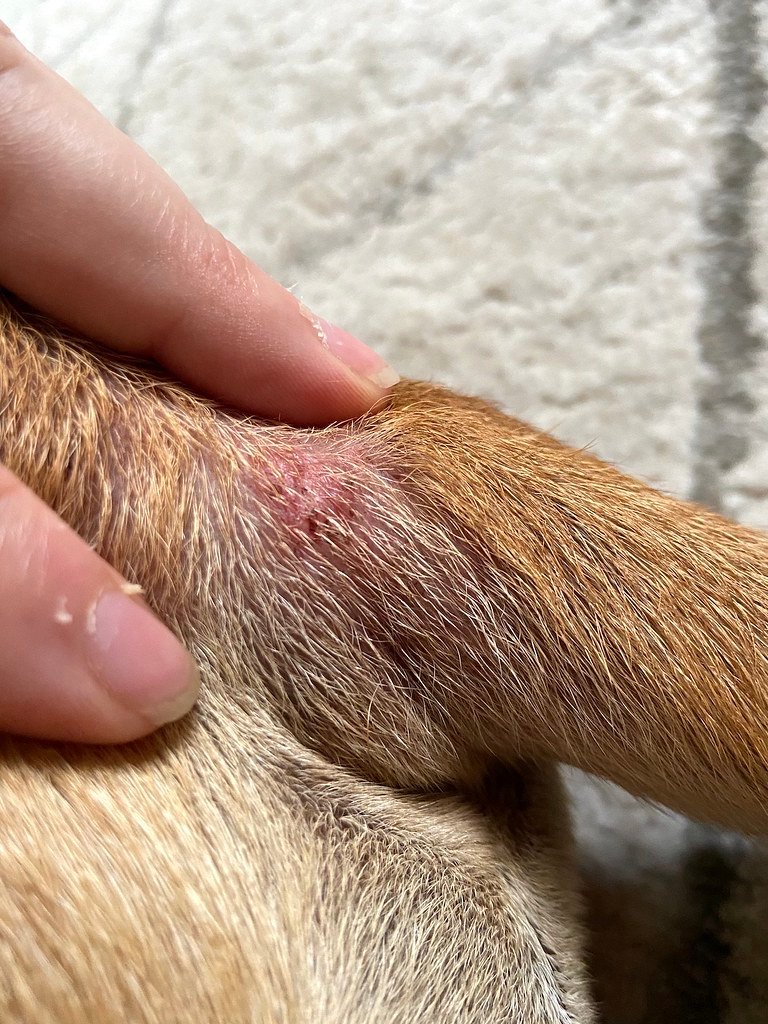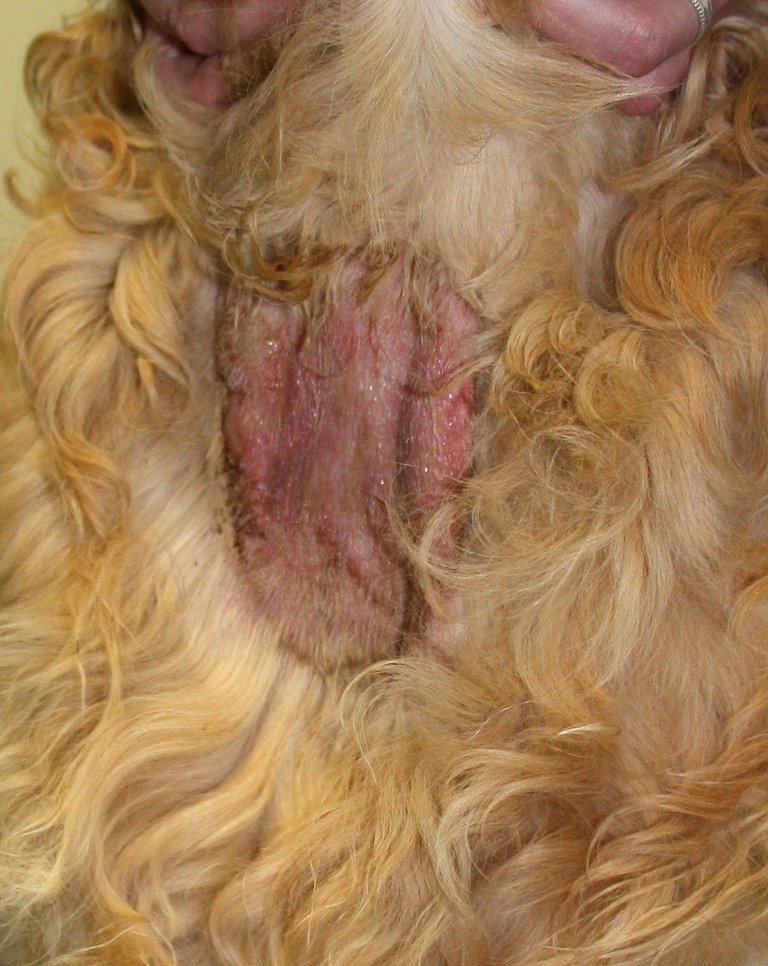Managing Canine Hot Spots
I think I will be correct if I say all phones have "Hot spots", I haven't used a lot of phones but I think every phone has this hot spot option giving room for another device to connect to its internet option.
What if I told you that our dear pets can also get affected by the ''hot spot" condition, it is only in this case, that it is not for connecting to the internet, rather it is a red, inflamed skin lesion that quickly appears, ooze's and may even contain pus. Hot spots are also known as acute moist dermatitis or pyotraumatic dermatitis.

flickr.com
Hot spots can be found anywhere on the body of our canine friends (dogs), but most common around the legs, hips, and head. It is not always a pleasant experience when it happens to them because it is usually itchy, and painful. It is also not a beautiful sight to behold as the sores may be very obvious, producing a smelly discharge, but sometimes may be hidden underneath a matted fur.
I do not think I would be completely wrong if I said dogs often cause hot spots for themselves, and I make this statement because it is often caused by self-trauma after a dog has scratched so intensely that an open wound has been created.
It is probably not completely their fault because so many things may cause itching in a dog itself. We have the likes of;
Allergies, which include food allergies or inhalant allergies.
Ear infections: Yeast or bacteria in the ear canal could be very irritating to the point that it gets the dog to begin to scratch therefore creating a case of hot spots behind the ear or on the neck.
Pyoderma is a primary skin infection that is also caused by yeast or bacteria that may cause the dog to scratch an area so much that secondary hot spots begin to form.
When the hair coats of a dog are left unkempt, the dog would bite at tangles therefore creating open wounds. Matted fur would prevent air from getting into the skin, and retain water after a dog swims or gets caught in the rain, now this is a great pot for the formation of a hot spot.

commons.wikimedia.org
When a dog has back problems or arthritis, they tend to lie down a lot, and lying on one side creates abrasions over pressure points like the hips, or ankles. When the dog licks the abrasion, a hot spot comes forth. Dogs like to chew or lick at degenerating joints, so a medical problem could also cause it.
Impacted or infected anal glands are annoying and painful, dogs would lick the area around the rectum and cause hot spots underneath or on top of their tail.
When a dog licks the sore spot, the superficial nerve endings in the skin get irritated, this act stimulates more itching, backed up by biting, scratching, and licking.
Most of these conditions are chronic issues in dogs that could result in recurring hot spots if not managed appropriately. Being able to identify and address the underlying cause of the hot spots will help prevent further skin problems.
- Just like humans, dogs can get bored too, and when this happens, they lick areas that are easily accessible. When they lie down, their forearms and their feet are under their faces, and this is why it is a good spot for hot spots to occur usually.
Other skin conditions have the appearance of hot spots, so it is important to first speak with your vet if you suspect a case of a hot spot in your pet. You may have heard that, hot spot cases would resolve on their own, but delaying the process of treating your dog would only lead to even more complications.
The best treatment option is to prevent it in the first place, but if that does not happen and a case of hot spot is already happening, vets would usually save the situation by doing one or more of the following.
Clipping the hair around the affected area to prevent further spread.
Cleaning the area with a gentle antiseptic cleaner.
Bathing with a chlorhexidine shampoo for dogs.
Clean the area gently with medicated dog wipes dai.
Prescribing oral or topical steroids to help control inflammation and limit the itching.
Wearing a dog cone to stop access to the hot spot, will distract the dog temporarily from consistent scratching, this should however be done under supervision.
Getting an allergy medication that would treat the underlying cause of the itching.
Humans who try to treat their dogs at home by themselves often make the mistake of using some human medications like Neosporin, Vaseline, and hydrocortisone, and this is not a good option as they tend to make the affected dog lick the area even more.
The good thing is, that dogs tend to improve fast once treatment is started on them. After treatment, the next thing is to prevent such occurrences from happening again, this can be obtained by preventing parasitic infection in your dog, treatment of skin issues promptly, and managing allergies properly. If your dog swims or baths frequently, it is good to ensure their coats are properly dried after each water section.
Some dogs begin to lick due to stress or boredom. In this situation, dog owners need to increase daily exercise and engage in playtime that would help them burn excessive energy and stay healthy too.
Conclusion.
Hot spots can be very painful and highly uncomfortable for our canine friends, getting fast treatment will make all the problems go, and restore your happy and playful canine friend.
References
akc.org/expert-advice/health/treating
petmd.com/dog/general-health/hot-spots
vcahospitals.com/know-your-pet/hot-spots
https://www.akc.org/expert-advice/health/treating-and-preventing-hot-spots-on-dogs/
This blog is so interesting and informative, especially for all pet lovers.

Sending Love and Ecency Vote!
Thanks for your contribution to the STEMsocial community. Feel free to join us on discord to get to know the rest of us!
Please consider delegating to the @stemsocial account (85% of the curation rewards are returned).
Thanks for including @stemsocial as a beneficiary, which gives you stronger support.